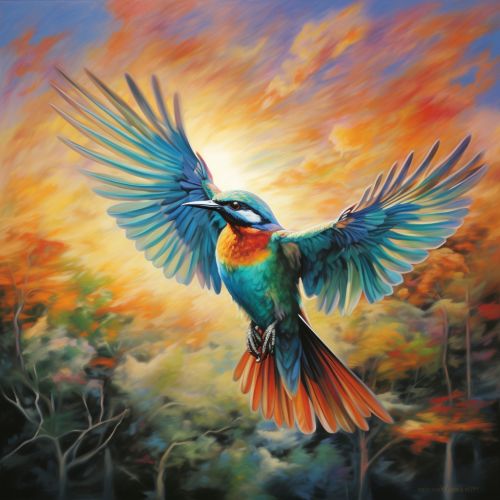Aves
Classification and Evolution
The class Aves, commonly known as birds, is a group of endothermic vertebrates constituting the class Aves. They are characterized by feathers, toothless beaked jaws, the laying of hard-shelled eggs, a high metabolic rate, a four-chambered heart, and a strong yet lightweight skeleton. Birds are the closest living relatives of the crocodilians and are descendants of extinct dinosaurs with feathers, making them the only surviving dinosaurs according to cladistics.


Anatomy and Physiology
Birds exhibit a range of physical characteristics, many of which are adaptations tied to their ability to fly. The skeletal system of birds is highly adapted for flight. It is extremely lightweight but strong enough to withstand the stresses of taking off, flying, and landing. One key adaptation is the fusing of bones into single ossifications, such as the pygostyle. Because of this adaptation, the weight of a bird's skeleton is only about 5% of its total body weight.
Birds also have a highly developed respiratory system, which supplies the high metabolic rates needed for flight. The avian respiratory system is significantly different from that of other vertebrates, with birds featuring unique structures such as air sacs and a unidirectional airflow within the lungs.
Behavior and Ecology
Birds occupy a wide range of ecological positions. While some birds are generalists, others are highly specialized in their habitat or food requirements. Even within a single habitat, such as a forest, the niches occupied by different species of birds vary, with some species feeding in the forest canopy, others beneath the canopy, and still others on the forest floor. Bird species also vary in their diet, with some including both plant and animal material in their diet, while others are exclusively carnivorous or herbivorous.
Birds also exhibit a range of social structures, from solitary to highly gregarious. Some bird species are known for their elaborate social structures, such as the cooperative breeding systems of the corvids.
Conservation
Birds face numerous threats and many species are currently threatened with extinction. Habitat loss and degradation, climate change, pollution, hunting, and introduced species are among the most significant threats to bird species worldwide. Conservation efforts for birds may involve habitat restoration, captive breeding, and legislation to protect endangered species.


